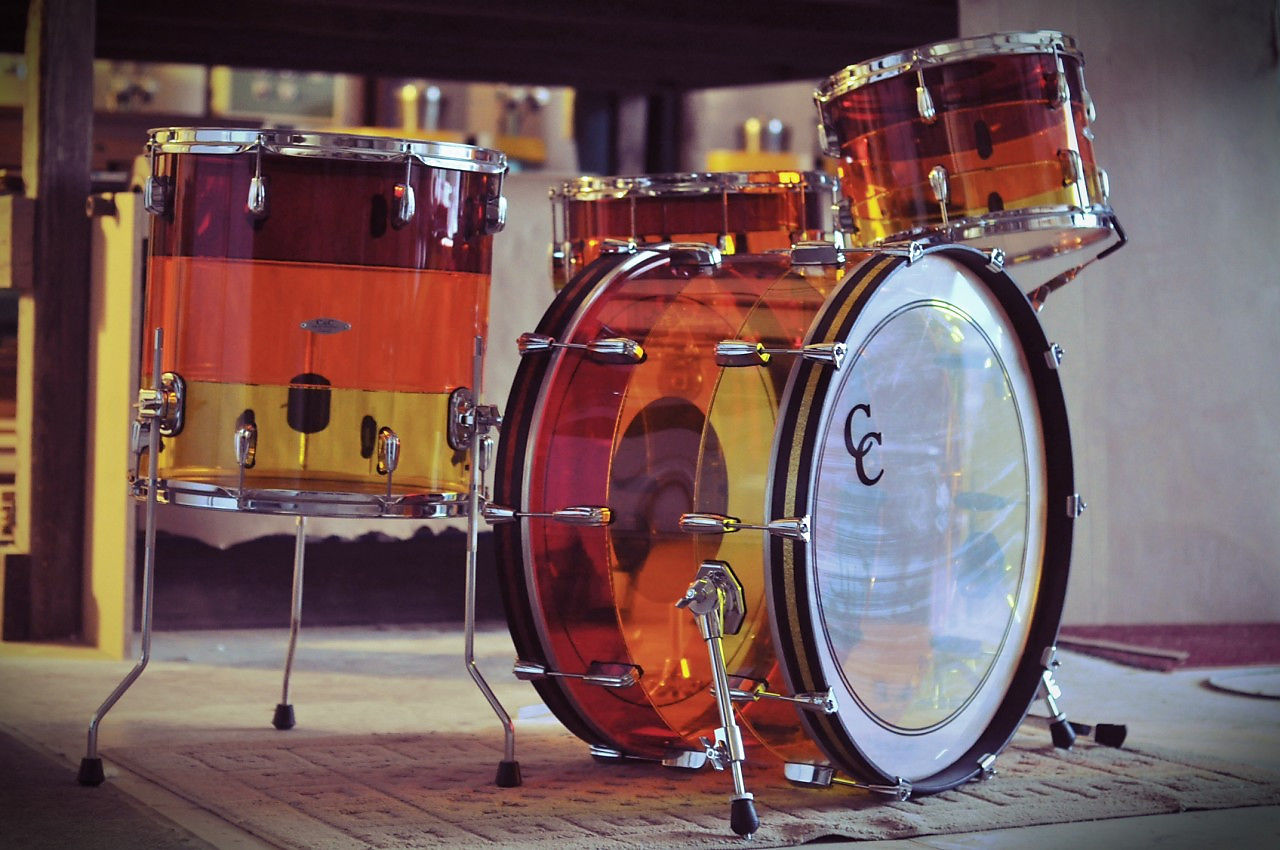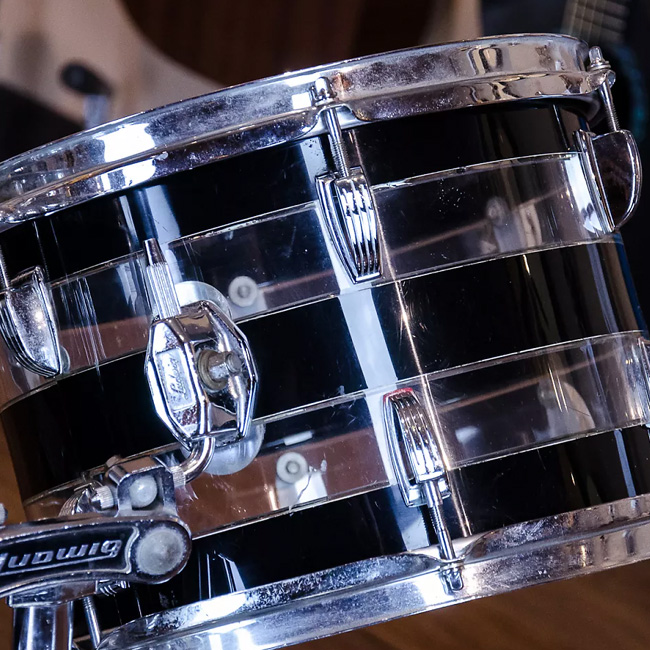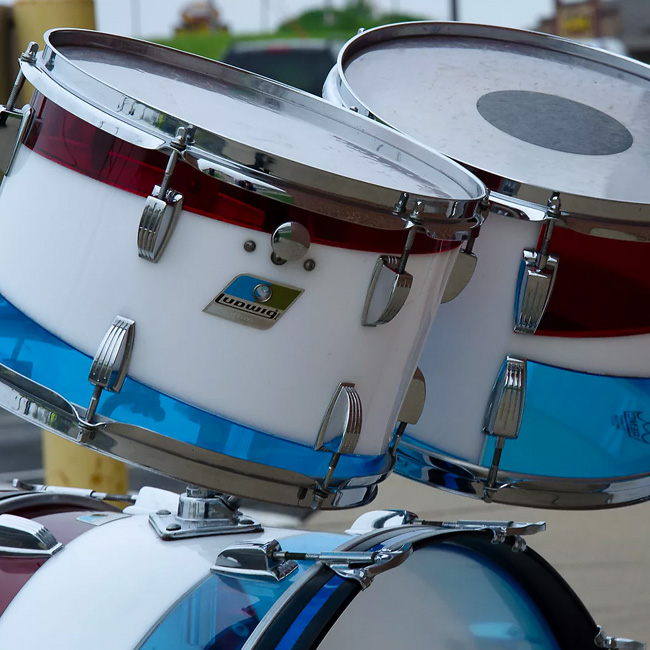When it comes to drums, plastic can be fantastic. Acrylic drums look amazing while offering the drummer a powerful sound and big projection. Even better, they have the added benefit of finally letting the audience actually see the drummer. The acrylic drums of the 1970s are prized as collectibles, while contemporary acrylic drums offer sturdy construction and a broad palette of sounds to put to use.
History
While Bill Zickos made an experimental acrylic drumset in the late '50s, the glory days of acrylic drums didn’t arrive until the '70s, when Ludwig issued the Vistalite range. Ludwig ended production of the original Vistalites in 1979, partly in response to the increasing cost of acrylic materials as oil prices rose. Companies such as Zickos and Fibes were some of the first to consistently offer acrylic drums, and modern companies such as C&C and Pork Pie have now joined the mix. Two popular acrylic offerings include Tama's Mirage range and Sonor’s X-Ray range. Ludwig brought re-issued Vistalites onto the market in 2001, complete with an amber-colored replica of John Bonham’s 1970s kit.


Sound

Compared to wooden drums, acrylic shells have a louder, punchier sound. A well-tuned acrylic snare drum can deliver a ton of sonic "crack" and projection. However -- as with any drum -- the drumheads, tuning, sticks and microphones used to create and capture the sound make a huge difference to the overall tone and feel. In a blind sound test within the context of a band, most drummers probably couldn’t tell the difference between acrylic and non-acrylic drums. Often the acrylic difference is "heard" with the eyes more than the ears. Acrylic drums can be used in diverse situations and musical styles, despite the association with loud or brash playing. With clear acrylic drum shells, many drummers choose clear drum heads over the coated type to maximize transparent surfaces on the kit. Choosing a double-ply clear drum head will give you better durability than a single-ply, and power dots in the center of clear heads can further extend the lifespan in hard-hitting situations.
Notable Players
John Bonham famously played Vistalite acrylic drums in the 1970s. Other drummers who have performed on acrylic kits include Ringo Starr, Karen Carpenter, Nick Mason of Pink Floyd, Lionel Hampton and Billy Cobham. In 1975, Keith Moon infamously showcased an acrylic setup with goldfish visible inside one of his drums on the television show Midnight Special. In recent years, Thomas Lang, Jon Theodore and Mike Portnoy have played acrylic drum kits on high-profile tours and during clinics.

Finishes and Colors
When the original Ludwig Vistalites were introduced in 1972, the two most popular colors were blue or clear acrylic. However, Ludwig also produced the original Vistalites in green, yellow, amber and red hues. Because they did not sell as well as blue and clear Vistalites, these other colors are now considered relatively rare and typically command a higher price. Vistalite acrylic bongos, congas and other drums were produced in relatively limited numbers, making these more rare and valuable on the modern market. By the late 1970s, Vistalites were available in multi-color finishes, including Rainbow shells and the famous Tequila Sunrise finish, in which each drum was striped red, yellow and orange. Opaque acrylic shells and a range of smoky acrylic finishes have also been produced.


Caring for Acrylic Drums

Acrylic drums are made by heating and bending a sheet of material into a cylindrical drum shell. The seam of the drum shell is then glued, tabbed or acrylic-welded together. Some manufacturers glue a plastic strip over the seam to hold the acrylic together. The manufacturing process and single-seam design make acrylic shells more prone to splitting, relative to traditionally constructed drums. The vintage multi-colored and striped drums have more seams between colors, and therefore even more risk of splitting. If an acrylic drum splits or warps, repair is tricky to impossible.
For this reason, drummers need to take extra care of fragile acrylic drums. Transport them in hard shell, padded drum cases and protect the drums from sudden changes in temperature or humidity. Transparent acrylic drums show dirt and smears more than other drums, so they need to be cleaned regularly. Glass cleaner, or one of the specific acrylic-drum cleaning products on the market, works well for this with a pure cotton terry cloth. Minor scratches on the acrylic drums can sometimes be removed with plastic polishers and abrasion removal products, though it’s important to make sure the cleaning products you use will not damage the acrylic drum shells.
